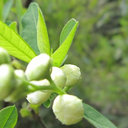Effects and mechanisms of Danshen-Shanzha herb-pair for atherosclerosis treatment using network pharmacology and experimental pharmacology.
Mo kle
Abstrè
BACKGROUND
The danshen (the root of Salvia miltiorrhiza Bge.)-shanzha (the fruit of Crataegus pinnatifida Bge. var. major N.E.Br.) (DS) herb combination is a commonly used traditional Chinese medicine with cardiovascular disease (CVD) treatment potential.
METHODS
In this study, we investigated the anti-atherosclerotic effects and mechanisms of DS by the integration of network pharmacology and polypharmacology. Eight main components were selected for target fishing by PharmMapper.
RESULTS
The network pharmacological study indicated that DS may target 41 proteins and 16 pathways associated with inflammation, lipid metabolism and endothelial protection, which indicates that DS probably adjusts these processes as part of its anti-atherosclerotic activities. Furthermore, this hypothesis was verified by polypharmacology using an atherosclerotic model. Histopathological examination showed that DS inhibited pathological changes in the arteries of atherosclerotic rats and reduced the intima-media thickness (IMT). DS significantly reduced the levels of total cholesterol (TC), triglyceride (TG), and low-density lipoprotein-cholesterol (LDL-C) and increased the high-density lipoprotein-cholesterol (HDL-C) level in the blood. DS also decreased the concentrations of interleukin (IL)-1β and IL-18, indicating anti-inflammation activity. In addition, DS increased the serum levels of nitric oxide (NO) and 6-keto-prostaglandin F1α (6-keto-PGF1α) and decreased the serum levels of endothelin (ET) and thromboxane B2 (TXB2), indicating an endothelial protective effect.
CONCLUSIONS
In conclusion, DS has an anti-atherosclerotic ability to lower lipid concentrations and to protect endothelial function, and it also has anti-inflammatory activity.



